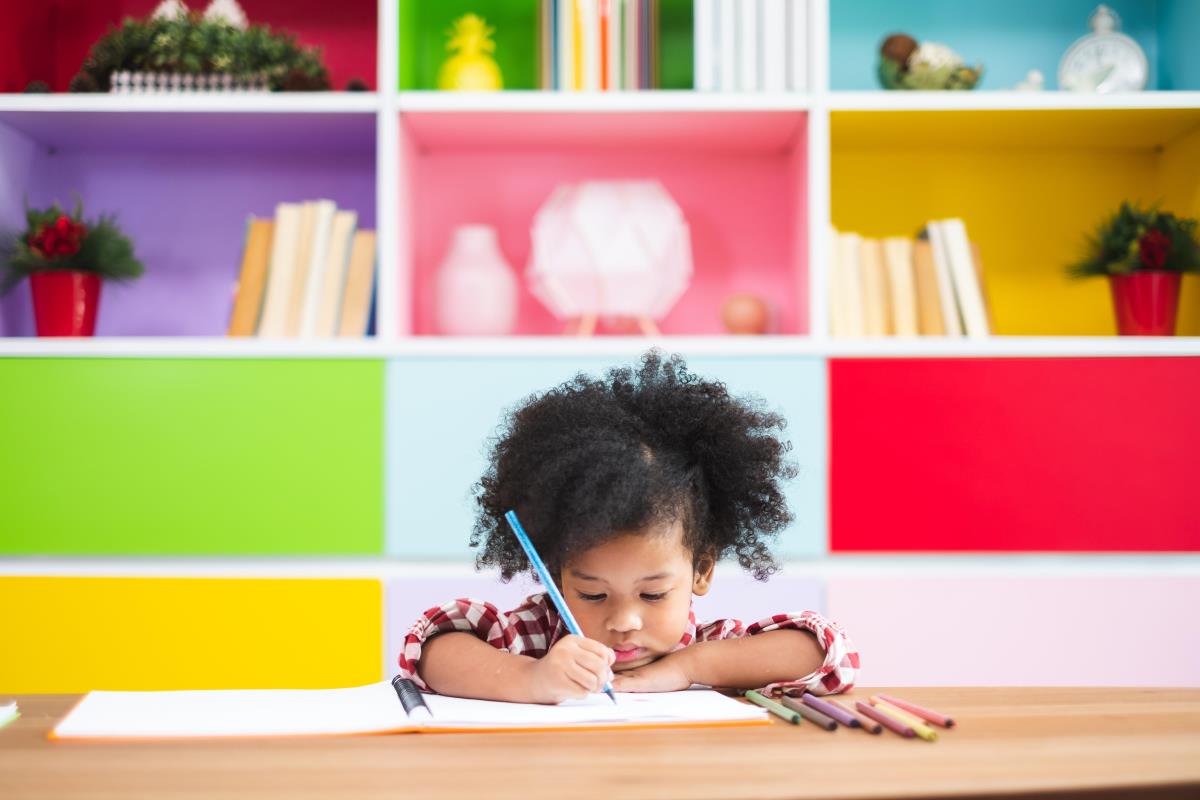Creating Learning Environments in Your Home

Our early years experts explain the how to create the right environments for learning in three key areas: reading, writing and maths.
---
We all know how much easier it is to get on with life’s admin, emails and work when a space is attractive, uncluttered and easily accessible. The same is true for children; the environment matters.
In helping your child to get ready for formal schooling, creating an environment for learning at home really does help. By talking about the routines you are undertaking and why you are carrying out different tasks, your child may well want to copy and practise what you are doing in his/her own way.
Subtle additions at home will help signal to your child that you regard learning, and learning materials, as important. Try setting aside a corner of the kitchen table or similar space for “school” activities to develop the following areas:
READY to WRITE: Provide a small basket or cardboard box with crayons, pencils, post-its, and small pads of paper. An attractive container of coloured pencils and washable markers is likely to attract your child’s attention. For older children you could add paper clips, a ruler, a rubber, lined paper, envelopes and a calculator or play till.
If you have space, you could even consider a little desk and chair. This can be the place your child uses to do his/her “work.” – perhaps mirroring yourself if you are working from home and taking calls etc. If you have younger children at home, keep stationery items out of reach when your older child is not using them. Keep it fun and avoid pressuring your child to use these materials. Save them for relaxed activities where your child can practise as he/she chooses while you do your own tasks.
READY TO READ: Another good idea at home is having reading materials readily available. We know that reading aloud to children is a key factor in them embracing reading in their own lives; similarly those who see their parents enjoying reading are more inspired to read themselves. As you read the newspaper your child can select from a basket of books or children’s magazines to ‘read’ themselves. It is important to have books for children to freely access at their own level; toddlers too will enjoy a basket of sturdy board books within their reach. When looking through pictures in a much-loved book which is read aloud to them again and again, children often retell the story to themselves, either silently or out loud. Being able to recall and re-tell a story is an important prereading skill.
READY FOR MATHS: The kitchen is a great place to add materials for your child to learn maths skills such as counting and measuring. Keep some plastic measuring cups or jugs, a cheap set of scales, spoons of different sizes in a low easily accessible cupboard or drawer accessible for his/her use. At those times when you are not too rushed, your child could help count and measure as you both pour cups of lukewarm water into a pan for cooking pasta, spoon flour into a mixture or drop carrot pieces into an empty pan. When you have less time to interact, putting the spoons, small bowls or sieves in size order or counting them makes a purposeful mathematical activity for your child to work on independently.
You probably already have many learning opportunities available in your home. Be alert to the learning potential of everyday objects and consider presenting them in new and different ways to refresh your child’s interest.
Have fun setting up, adapting and using these learning spaces together.





